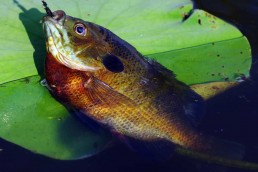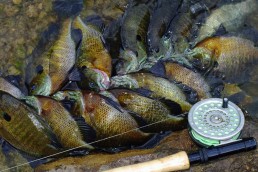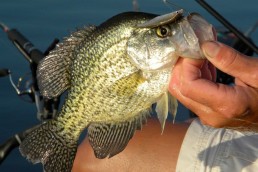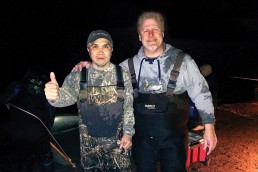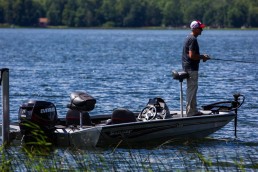Work the Surface as an Edge on Mid-lake Humps
SHARE THIS POST
Let me tell you about submerged flats and humps and topwater thrills.
Out in the middle of the lake are places that once were the crests of hills. At one time they might have been covered with row crops or a stand of trees, but now all they support is a couple of feet of water and grow aquatic weeds. Some hide old stumps just below the surface, while others contain what we on Lake Barkley call “blow-ins,” logs and whole trees that float along and lodge on shallow flats.
These are dangerous places for boaters, and we avoid them during the fall when the water recedes.
But not John Williams.
He taught this old dog a new trick during a recent trip to the Tennessee portion of Kentucky Lake. One of the mid-lake humps we fished held a special significance to Williams.
Before Kentucky Lake became one of the largest impoundments in the nation, this piece of inundated topography belonged to his grandfather, John Buchanan. It was part of a farm that had been in the Williams family for generations.
It held a special significance to me because here we were hundreds of yards from any shore, yet we were consistently catching good bass on topwater baits. Even if you know fish are there, one of the last things you might consider throwing at them would be a topwater bait. But that’s what worked best, and man was it fun.
Fishermen run right past these places all the time because most of the time they don’t contain any fish. But for a month or two during the fall they attract baitfish by the swarms and largemouth bass by the schools.
Are you enjoying this post?
You can be among the first to get the latest info on where to go, what to use and how to use it!
Williams says what he looks for mostly is birds working the area, which mean that baitfish are on the flat. He likes flats and humps that are next to deep water. It helps, of course, that John has an intimate knowledge of the lay of the underwater land and that he grew up on a famous resort that bears his grandfather’s name.
John has been fishing since he could walk. During his 40 years of life, he worked as a fishing guide for years and fished tournaments for a bunch more. But for the last decade or so, most of Williams’ time has been devoted to running Buchanan Resort with his sister, Pam.
Buchanan is one of my favorite places. The farm-turned-resort has a family tradition that defines the term “southern hospitality.” It’s still Kentucky Lake, and even though I know the upper end of it well, I learn something new every time I jump across the Tennessee line.
The water down there isn’t much different than around Jonathan Creek where I used to guide, but the Tennessee perspective and approach makes it like a different lake—and it’s a close drive.
Both Barkley and Kentucky lakes have lots of main-lake flats and humps such as the ones Betty and I fished with John. Occasionally, we dragged crankbaits, spinnerbaits or Carolina-rigged worms through them during the spring, but in all honesty I never thought of trying topwater plugs there because my mind is conditioned to associate the bank and visible cover with other baits. But the same pattern that works down there will work on Lake Barkley and Kentucky Lake up here.
During our two mornings of Tennessee open-water, topwater fishing, I tried other types of sinking baits just to see. Because these spots were loaded with feeding fish, we could occasionally hook one on subsurface offerings. But there really was no comparison to the number of fish and the amount of fun we had with baits that disturb the surface, and the bass that do the same with ravenous vigor.
Besides, by fall, when these humps and flats become shallow, the best ones contain some patches of submerged grass that has sprouted throughout the summer. This makes it difficult to retrieve anything that sinks; you catch a lot more grass than bass.
Williams doesn’t guide anymore, but some of the best guides in the area work out of Buchanan Resort. I’ve fished with a few of them, and have learned something from every one of them. MWO
MWO
SHARE THIS POST
Did you enjoy this post?
You can be among the first to get the latest info on where to go, what to use and how to use it!
